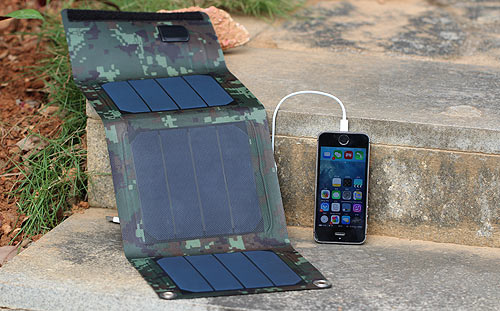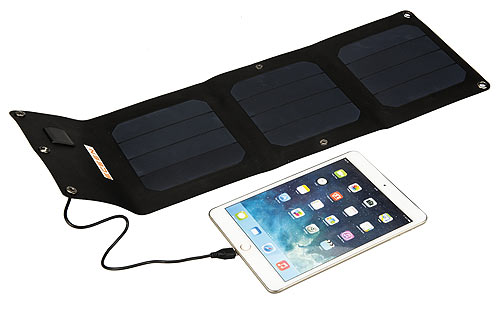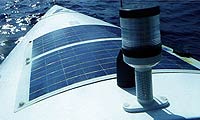Background - New to Solar Panels? Read this.
- Perhaps a bit obvious, but super important… a solar
panel converts solar energy into a form that is useful for your devices. On a
sunny day, you will get more energy than you will on a cloudy day.
Additionally, the energy that you can get out of this device will fluctuate
depending on shadows, people walking in front of your panel, changes in cloud
cover, etc. Also, you need sunlight rather than artificial light. In other words,
solar panels don’t generally work indoors.

- Many solar panels are created for a specific voltage.
For example, this panel outputs 5Vs and is compatible with many mobile devices
(most anything that uses USB to charge). This voltage stays constant assuming
there is enough energy to get it to the right level, so you buy a panel that is
useful for the devices that you want to recharge.

- Amps is a measure of how quickly electrons are
flowing through a circuit. Generally, the higher the amps the faster it will
charge. Many mobile devices have 1A or 2.1A chargers. Some devices, like
iPhones, have the ability to detect when you plug into something that doesn’t
produce enough amps. In Apple’s case, you get a warning that the accessory that
you are plugging into may not be supported.
- Due to fluctuations in energy that is provided by the
solar panel, it often makes sense to charge a battery rather than directly
charging a device. Then, you charge your device with the battery rather than
the solar panel. This also is nice so that you can leave the less expensive
battery charging at camp or home base while you are out and away for the day.
How it Works
Contact Information

|
 |
Background - New to Solar Panels? Read this.
Date: 04/22/2016 View: 2535

Background - New to Solar Panels? Read this.
- Perhaps a bit obvious, but super important… a solar
panel converts solar energy into a form that is useful for your devices. On a
sunny day, you will get more energy than you will on a cloudy day.
Additionally, the energy that you can get out of this device will fluctuate
depending on shadows, people walking in front of your panel, changes in cloud
cover, etc. Also, you need sunlight rather than artificial light. In other words,
solar panels don’t generally work indoors.

- Many solar panels are created for a specific voltage.
For example, this panel outputs 5Vs and is compatible with many mobile devices
(most anything that uses USB to charge). This voltage stays constant assuming
there is enough energy to get it to the right level, so you buy a panel that is
useful for the devices that you want to recharge.

- Amps is a measure of how quickly electrons are
flowing through a circuit. Generally, the higher the amps the faster it will
charge. Many mobile devices have 1A or 2.1A chargers. Some devices, like
iPhones, have the ability to detect when you plug into something that doesn’t
produce enough amps. In Apple’s case, you get a warning that the accessory that
you are plugging into may not be supported.
- Due to fluctuations in energy that is provided by the
solar panel, it often makes sense to charge a battery rather than directly
charging a device. Then, you charge your device with the battery rather than
the solar panel. This also is nice so that you can leave the less expensive
battery charging at camp or home base while you are out and away for the day.
|





